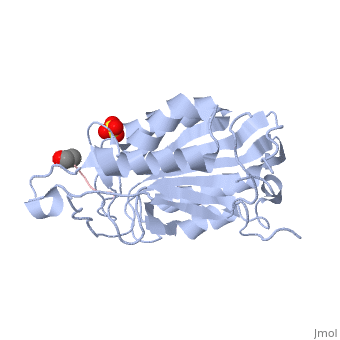Maureen E. Hill/Sandbox1
From Proteopedia
(Difference between revisions)
| Line 1: | Line 1: | ||
== Structure == | == Structure == | ||
| - | <StructureSection load=' | + | <StructureSection load='1f1j' size='350' side='right' caption='Structure of caspase-7(PDB entry [[1f1j]])' scene=''> |
Anything in this section will appear adjacent to the 3D structure and will be scrollable. | Anything in this section will appear adjacent to the 3D structure and will be scrollable. | ||
| - | + | ||
| + | == Background == | ||
| + | |||
| + | Caspases are cysteine-aspartate proteases that are responsible for the execution of apoptosis, also known as programmed cell death. Dysregulation of apoptosis has been linked to neurodegenerative disorders, including Alzheimer's and Huntington's, as well as inflammatory diseases and cancer. | ||
| + | |||
| + | The apoptotic caspases consist of two distinct classes: the initiators (caspase -2, -8, -9, and -10) and the executioners (caspase -3, -6, and -7). All caspases are synthesized as catalytically inactive zymogens that must undergo proteolytic cleavage to be activated during apoptosis. Initiator caspases are activated by upstream cellular events, which in turn cleave at distinct internal aspartate residues in the executioner caspases to separate the large and small subunits. The executioner caspases then cleave a wide range of targets within the cell that ultimately leads to cellular suicide. | ||
Revision as of 15:48, 21 November 2013
Structure
| |||||||||||

